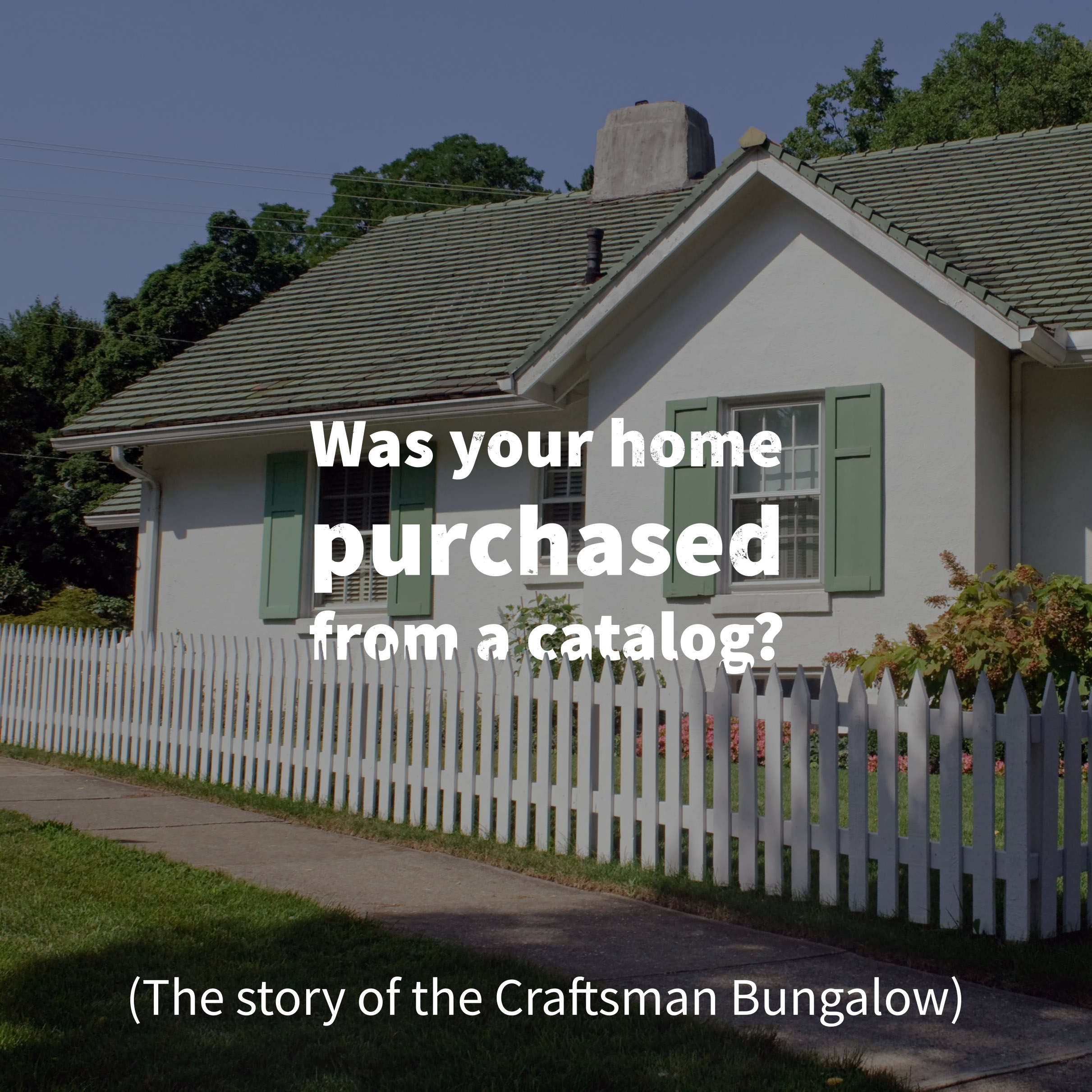Was your home purchased from a catalog? The story of the Craftsman Bungalow.
Was your home purchased from a catalog? The story of the Craftsman Bungalow.
Was your home purchased from a catalog? The story of the Craftsman Bungalow.

Catalogs. Will our kids even know what those are? If catalogs are becoming a thing of the past, I’d say that we can say with confidence that ordering a home from a catalog is certainly something from a period we will refer to as “yesteryear”. So, while our kids may never understand the excitement of looking through the toy catalog that was released annually at the end of November, they will likely, at some point know what a Craftsman bungalow looks like.
The Craftsman bungalow is, “such an American classic that you could even build your own from a kit in a mail-order catalog” states an article on Realtor.com. These small homes got their start in India. According to that same article, the term “bungalow” dates back to the 18th century when bangla houses were built to house British colonial authorities. These homes were small, having one story and typically a thatched roof. Today, the term “bungalow” in the US is used to refer to a small home with no more than one and a half stories with a gabled roof.
While there are many different varieties of the Bungalow the Craftsman is the most popular. The term “Craftsman” was developed by someone in marketing, as most things are. “’Craftsman’ comes from the name of a popular magazine published by furniture designer Gustav Stickley from 1901 through 1916. Stickley was a leading proponent of the arts and crafts movement, which bucked the rise of industrial mass manufacturing by espousing the virtues of handcraft and simple, folksy design,” reads the Realtor.com article. Since bungalows could be built without tons of materials or effort, this style of home was a good fit for the arts and crafts community. Thus led to Stickley selling “Craftsman Bungalow Home Kits” through his magazine in the early 1900’s. These kits were priced around $1,000.
Anytime someone is successful in the commercial industry there are likely to be those following behind trying to replicate their success. Thus, companies like Sears started to offer these kits in their catalogs. So how can you tell if your home is a true “Craftsman” Bungalow or just a copycat? Thanks to Realtor.com we have a list of criteria we can look for when trying to determine if it is a true Craftsman.
- Low-pitched, gabled roof (occasionally hipped), with wide, unenclosed eave overhang
- Exposed roof rafters
- Simplified decorative beams or braces under gables
- One and a half stories
- Horizontal shape
- Porch with thick square or round columns
- Porch supports usually squared and sometimes tapered
- Porch support bases extending to ground level
- Wood, stone, or stucco siding
- Exterior stone chimney
- Most of the living spaces on the ground floor
- Living room at the center
- Dominant fireplace
- Connecting rooms without hallways
- Built-in furniture and lighting
- Numerous windows
- Some windows with stained or leaded glass
- Beamed ceilings
- Dark wood wainscoting and moldings
Source:
https://www.realtor.com/advice/buy/craftsman-bungalow-organic-architecture/